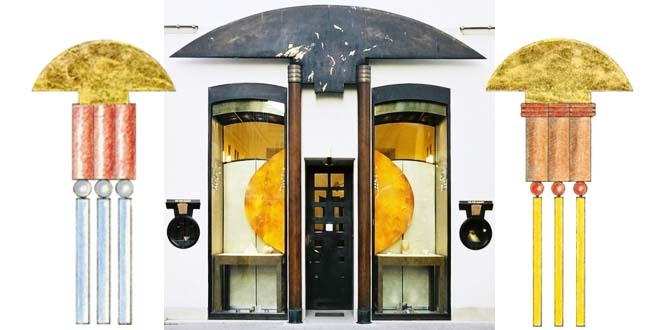Hans Hollein – Star architects and their Jewelleries – Part 3
What are the similarities among a unique candle, architecture and jewellery making? It seems that there is nothing in common, they are completely different for the first sight. If you think that each form can be a way of self-expression and each material can give an extra meaning to the creation, then we will find ourselves in candle and jewellery shops in downtown Vienna in the 80s. These beautiful stores were designed by the famous Austrian architect Hans Hollein. Just like the other star architects from my blog series, Hollein also dreamt of a smaller scale than the stores: he designed jewelleries, watches and other objects as well.
Hans Hollein 1934-2014
Hans Hollein started his studies in Vienna, then he studied architecture and urban planning in several universities in the US. He travelled around the US and Mexico by car. He was impressed by the architecture of these countries. He worked in Sweden and in the United States. Afterward he returned to Vienna, he founded his own architect office in 1964. He was awarded by Pritzker Prize in 1985. He was a versatile personality. He worked as a journalist besides planning. He was active in education. As a guest professor he was invited to several European and American universities.
Retti Candle Shop
At the beginning of his career he designed smaller scale architectural projects. He planned the exclusive and remarkable Retti Candle Shop in Vienna city centre in 1964. This little shop is still beautiful today, a real-time masterpiece, an aluminium jewel box.
Schullin Jewellery shops
He put his mark on Vienna from the 60s for decades. According to his plans two famous jewellery shops were opened in the Austrian capital in the 70s and 80s: Schullin I. and II. The façade and the shop-window of Schullin I. shop are impressively sculptural. You can get to the shop through a gold coloured brass crack on the granite façade. The interior was designed with engineering precision and rationality.
Schullin I. Jewellery shop, 1970-79.
The second shop, Schullin II. reflects on the conceptual and editorial principles of postmodernism. The forms and materials used in the interior are representing grandeur and magnificence.
Schullin II. Jewellery shop, 1980-89.
At that time he was requested to design jewelleries too.
Hans Hollein’s Jewelleries
The Palm motif is used in most of his works: it appears in his architecture and in his jewelleries as well. He planned a kind of palm forest into the lobby of a tourist agency in Vienna (1976-79). He designed a Palm brooch for the request of the famous Austrian jeweller Köchert dynasty in 1987.
The Italian Cleto Munari worked with several architects. They created together jewelleries, design ornaments and pens. He also invited Hans Hollein to design a jewellery collection. Hollein marked his jewelleries: Erotic ritual. The Egyptian and the native Indian jewellery art had a great impact on him. These characteristic forms are involved in his works.
Collezione Cleto Munari, 1986.
His Design Objects
Hans Hollein designed watches besides jewelleries for Cleto Munari between 1985 and 1988.
He designed sunglasses for American Optical Corps in 1972. Today they are still extremely funny and exciting. On the left side of the pictures below, Hans Hollein is wearing sunglasses designed by himself
As in my previous blog posts it is really exciting to see how a famous architect designed small scale jewelleries. If you are interested in my previous blog posts presenting the buildings and jewelleries of Zaha Hadid and Frank Gehry click on Zaha Hadid’s and Frank Gehry’s blog post.
If you are interested in what kind of jewelleries I design as an architect, visit my homepage.
Find building, jewellery and object photos here, here and here.


